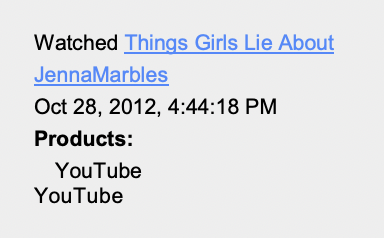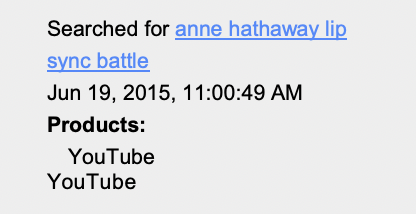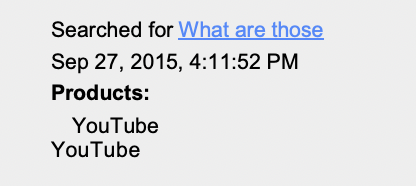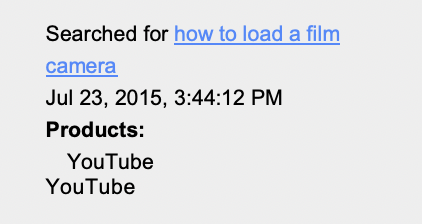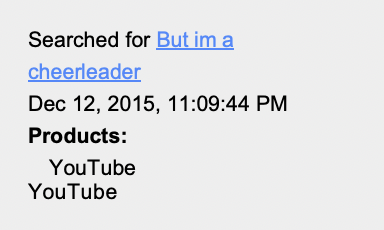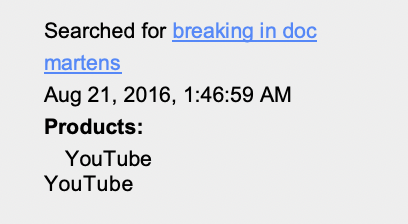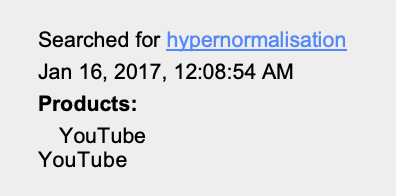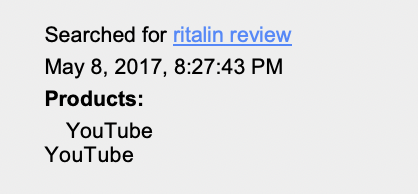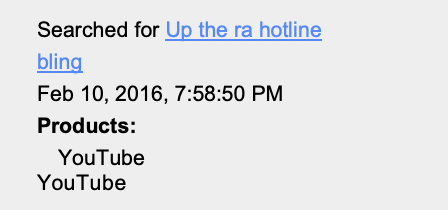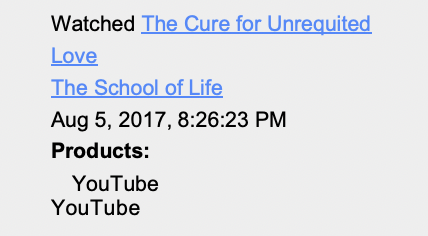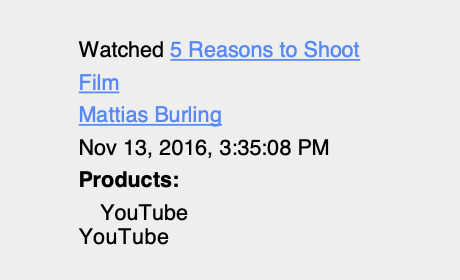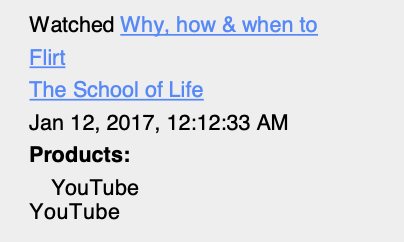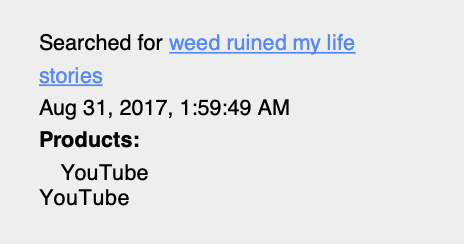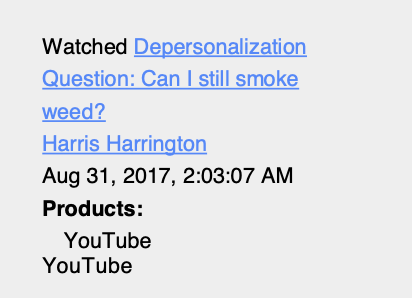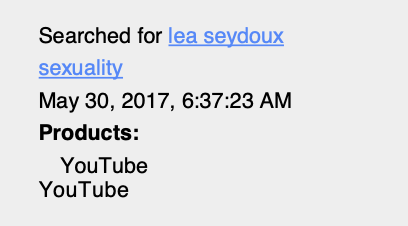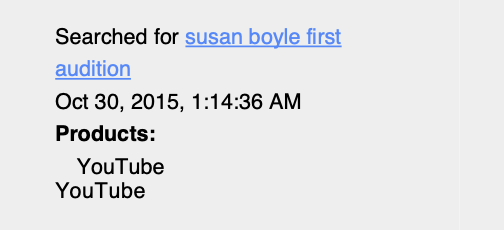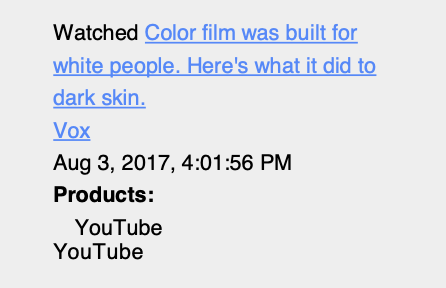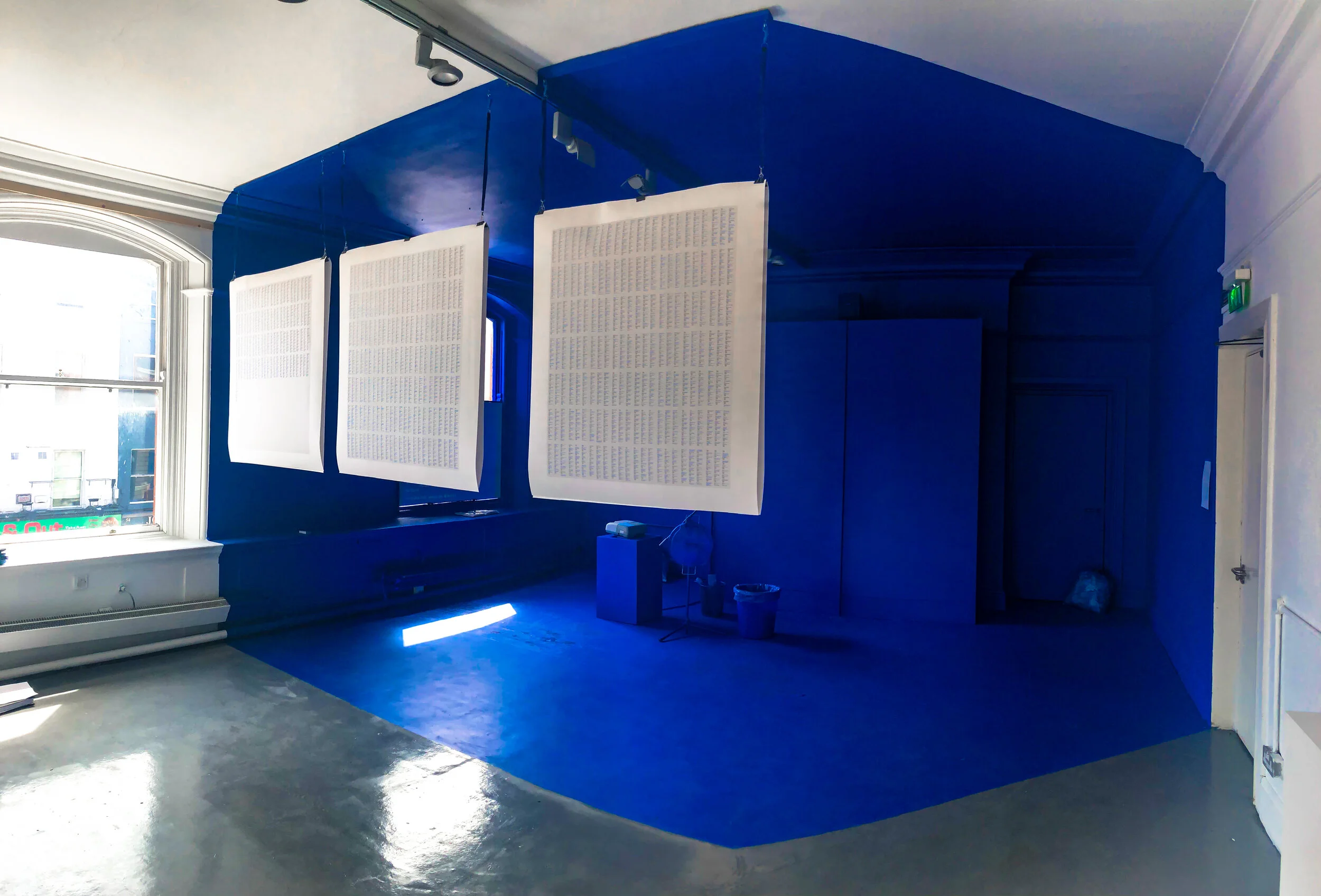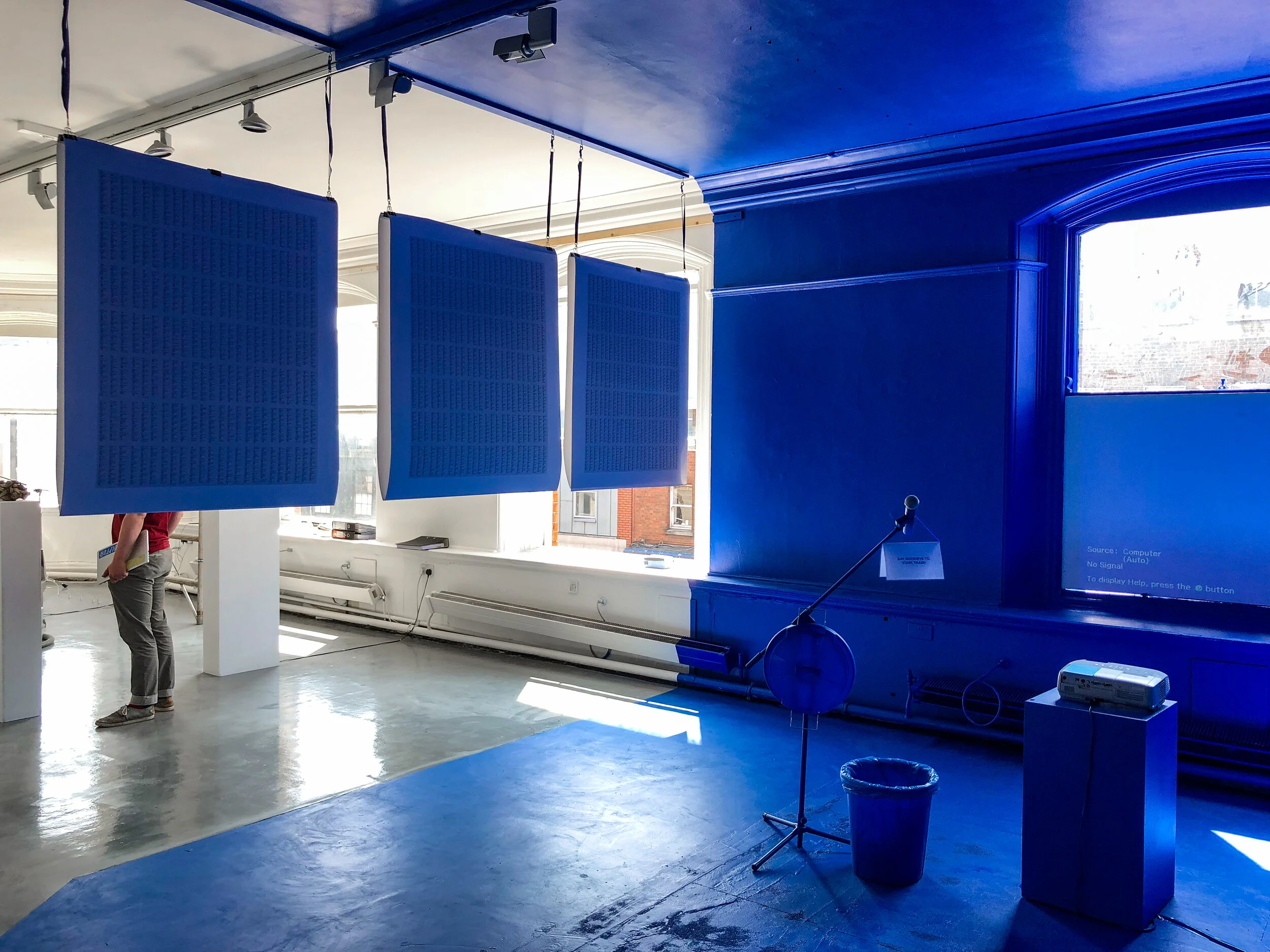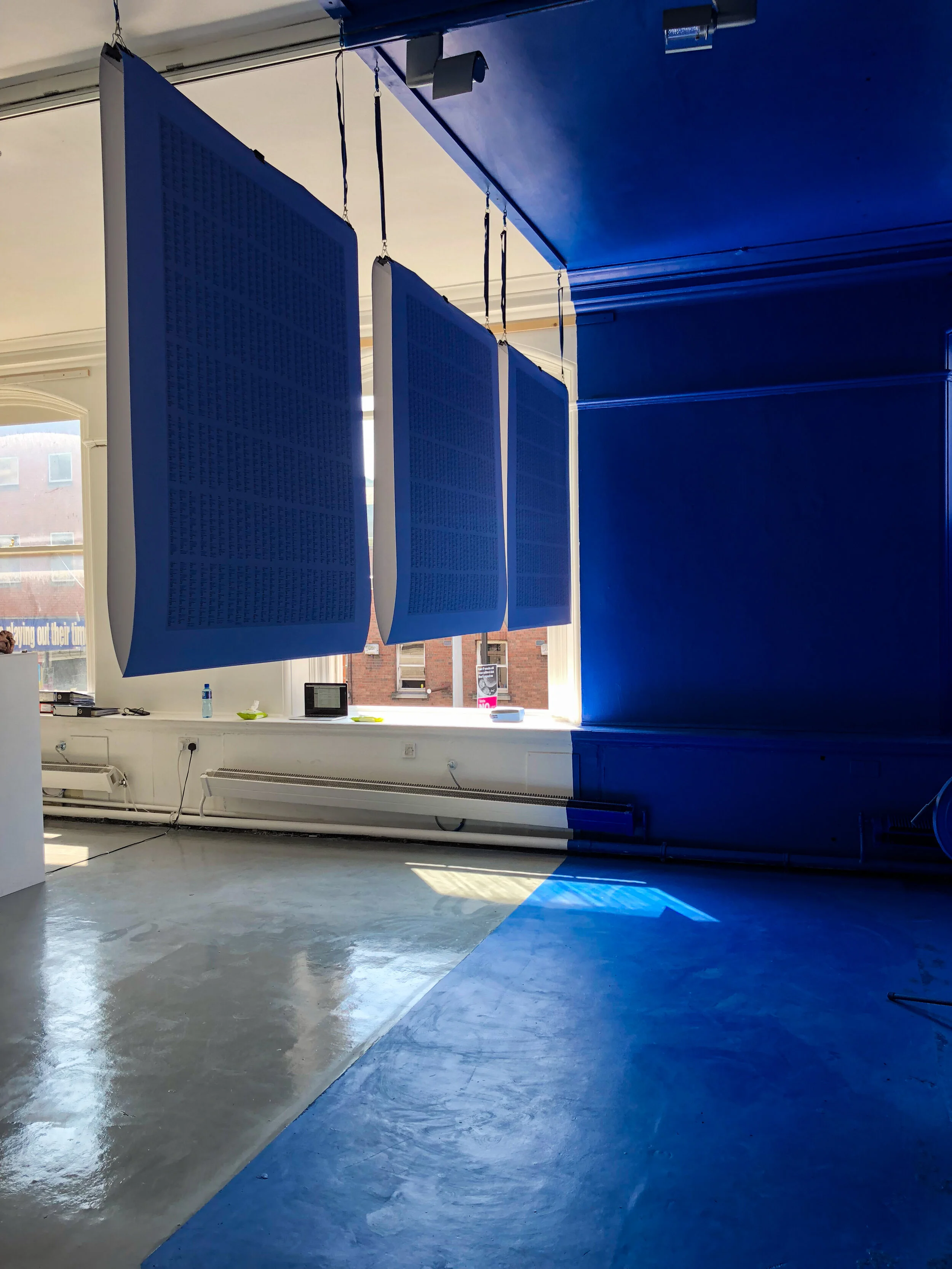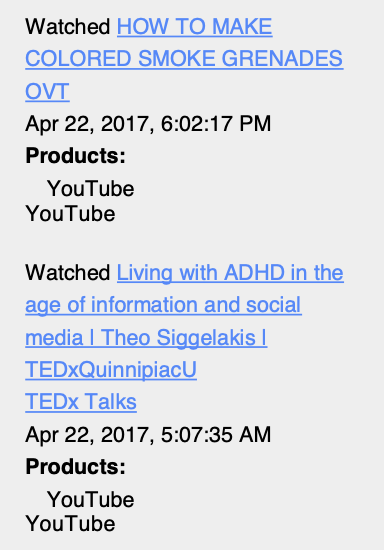Blue: Check The Input Terminal
BFA graduate showcase, 2018.
The story of what I told the machine. The blue comes from the disconnected-from-device projector when its beam turns a default pure blue. This beam creates a powerful glow that usually fills a room that was dimmed for the projector initially, and is met with the disconnect of attention from its user and participants. I began to consider this blue as a metaphorical gateway to virtual space. I spent a total of 4 months searching for and recording matches to this blue in physical contexts. I saw these blue spottings as virtual spaces trying to have a physical footprint in our society.
My work examines the consciousness of my transference between physical and virtual spaces and questioning what inhabiting both means. Check The Input Terminal is a physical space that is designed to represent the virtual, hosting the viewer to ask the questions I’ve held throughout my process. How do we navigate and behave on our own in these two spaces? How consciously engaged are we when we are alone? What does this behaviour reveal about ourselves?
The six AO-prints of my Youtube search history from 2012-2018, when I was aged sixteen to twenty-two, is a humorous take on personal downloaded data. What I discovered is the data of my pubescent consciousness, which can be seen as silly and unprofound. Yet at times, it’s excruciatingly personal information. Clickbait after clickbait video titles, viral clips, obsessive repeated watches of pop songs, advice on “How, Why and When to Flirt”. The floor, walls and ceiling painted blue nods to how intimate sensibilities prosper in virtual space, as the colour elicits more than just peaceful daydreams, it is known to actually relax our nervous systems. This is why physicians paint their waiting rooms tints and shades of blue; helping patients relax. It’s an environment of safety, vulnerability and utter ease.
Although my objective and interest in blue is not that of the same as French artist Yves Klein and his monochrome paintings, I found his considerations to be of useful influence. At his 1959 lecture in Sorbonne in Paris, he spoke of his passion for blue, “Blue has no dimensions, it is beyond dimension... Blue suggests at most the sea and sky, and they, after all, are in actual, visible nature what is most abstract.” I felt this perfectly encapsulates for me why blue represents virtual space in its infinite and unfathomable scale.
Upon the surface of my work I share my experience of privacy and occupancy in virtual space, which generates mostly a reaction of light embarrassment, humour and playfulness, while leaving myself and the viewer with concerns and questions; does collected data truly represent who I am, what on earth have I said to the machine, what is the real value of saving this data, and who cares if it was taken without my knowledge?
